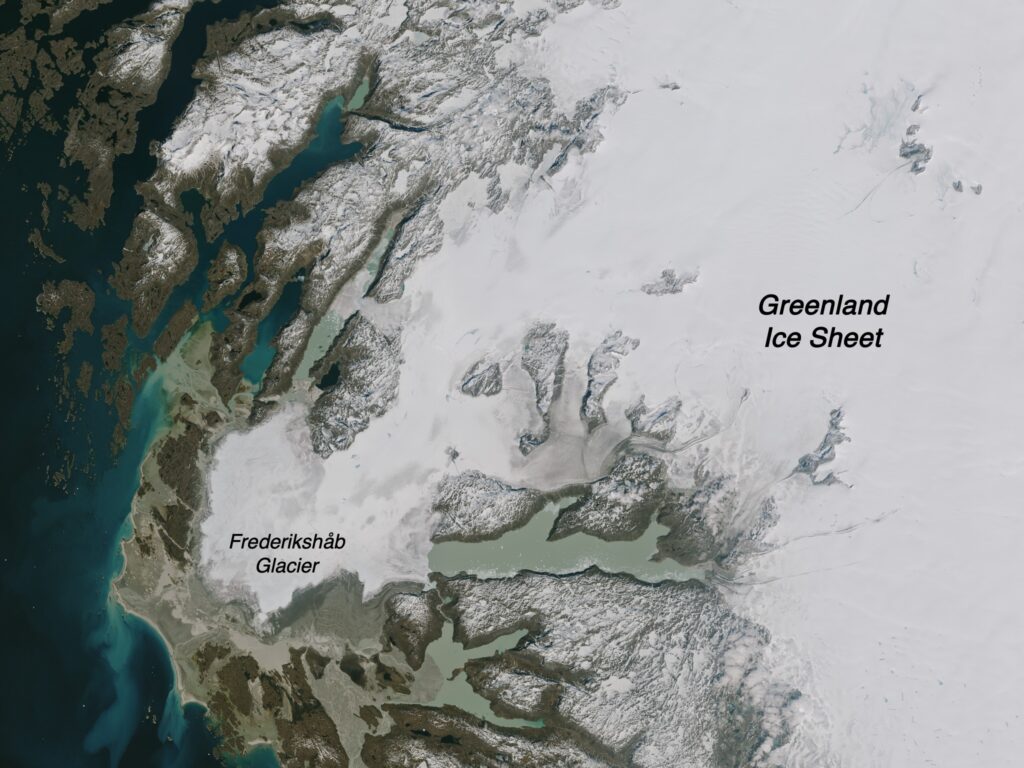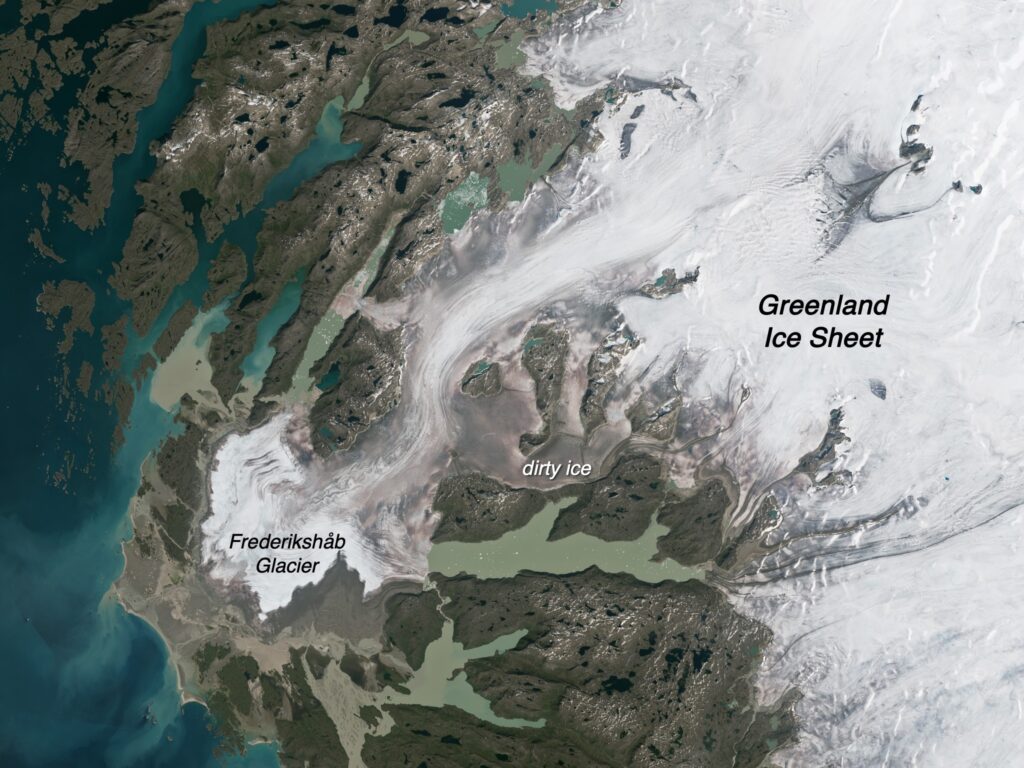Let’s begin to unpack what we just saw!
Light from the sun travels in a straight line until it hits something. Depending on what it hits, the light can pass through, be reflected, absorbed, or bent. How can we predict which of these things will happen?
Well, objects like white t-shirts, snow, and ice have something called high albedo. This means they reflect lots of sunlight. Reflecting the light keeps them cool. Things like black t-shirts, dark rocks and oceans have low albedo. They soak up sunlight and get warm. This phenomenon is why you probably choose a white outfit over a black one on a really sunny day!
Did you know this can also affect Earth’s temperature?
Take Earth’s glaciers, like the Frederikshåb Glacier in Greenland*. Notice how they are big, shiny, and white? They reflect a lot of sunlight back into space, keeping our planet cooler. In a way, glaciers act like Earth’s white t-shirt!

But as Earth heats up from climate change, we see these glaciers start to melt, showing more of the dark land and ocean underneath. These darker surfaces absorb more sunlight, which makes the Earth even warmer.

This starts the ice-albedo feedback loop—a cycle where Earth gets warmer and warmer as more and more ice melts. This cycle is a big reason why our planet’s climate is changing so quickly!
*NASA Earth Observatory images by Wanmei Liang, using Landsat data from the U.S. Geological Survey.